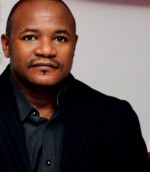Iam elated to note that the effort in taming Ebola spread is yielding result in early 2015. It is the year that will usher a new set of international sustainable development goals. As I wrote 2 weeks ago in this column “Ebola Virus Disease transmission remains intense in Sierra Leone, with 327 new confirmed cases reported in the week to 14 December, however there are signs from the country situation reports that the increase in incidence has slowed and the incidence may no longer be increasing”.
Iam also glad that we are receiving fresh positive news all over the place about progress in curtailing Ebola in West African 3 remaining countries. Health Reporters an online newspaper in its published story “Ebola: Sierra Leone in better position today – UN” observed that the United Nation Mission for Ebola Emergency Response (UNMEER), Mr Ismail Cheikh, said Sierra Leone is in a better position today in its fight against Ebola virus. Cheikh made the remark while briefing newsmen in Freetown recently. “We are now looking at one future response package at the second phase of the disease control and coordination.” I am left with the optimism that Sierra Leone can make it but it will need a lot of effort from all of us,” he said. He reminded Sierra Leoneans not to be complacent as the situation was still bad because of the number of cases. He expressed hope that people now had a better understanding of the data.
Sierra Leone is one of the three West African countries worst affected by Ebola after Liberia and Guinea. The epidemic has taken 8,235 lives out of 20,747 known cases worldwide over the past year. Also WHO special envoy, David Nabarro, said the UN had been able to mobilise enough funds to fight and eradicate the disease. Nabarro disclosed that originally the UN appealed for more than a billion dollars in September which was revised to 1.4 billion dollars in October. According to him, about 1.1 billion dollars have been received, a gesture he described as “a good response.” He said they expected the rate of infection to drop considerably in a few weeks to come.
Another positive published story in Health Reporters ‘WHO concludes meeting with researchers on 2 Ebola vaccines’ reported that World Health Organisation (WHO) has concluded a meeting with researchers, regulators, vaccine developers and policy makers on two Ebola vaccines, Dr Marie-Paule Kieny, the Assistant Director-General of Health Systems and Innovation, said. Kieny made the disclosure at a news conference with UN correspondents on Friday in New York. She said “so far, the two Ebola vaccines that have already undergone the first phase of testing have an acceptable safety profile. She “The third phase of testing, which consists of giving the vaccine to healthy volunteers in affected areas, is about to begin.” She added that research teams have been set up and preparations have been put in place, including special refrigerators for the vaccine tests in Liberia, Sierra Leone and Guinea.
Another remarkable progress in 2015 worth sharing was also captured by Health Reporters ‘Ebola vaccine trials to start in Liberia in late January’. It reported that “the first large-scale Ebola vaccine trials in West Africa are expected to start in Liberia as early as late January”. No less than 9,000 people are expected to take part in the study on the chimpanzee adenovirus vaccine. According to WHO Assistant Director General Marie-Paule Kieny, the vaccine is produced by British company GlaxoSmithKline, as well as VSV, produced by U.S. firm Merck. Kieny added that safety tests on humans in Western research institutions over the past months have shown acceptable results for the two vaccines. “This is really good news,” she said.
Additional trials involving thousands of people are to start in February in Sierra Leone and Guinea, the other two West African countries at the centre of the Ebola epidemic. No proven drug or vaccine currently exists against the deadly virus, which is transmitted through bodily fluids and that leads to fever, haemorrhaging and, often, death.
The reported also highlighted that the tests in the three West African countries will each have a different design, in order not to duplicate the efforts. In Liberia, participants will be selected from the general population, while the Sierra Leone trial will focus on health care workers, who are especially at risk for contracting Ebola. In Guinea, researchers plan to immunize groups of people who are connected to Ebola patients. The vaccines have to be stored at minus 80 degrees and pharmaceutical companies are trying to modify the substances so that they can be cooled at higher temperatures.
A latest related story ‘Sierra Leone: How Kailahun district kicked Ebola out’ posted in WHO website reported that Kailahun district in eastern Sierra Leone was one of the country’s first hotspots in the Ebola outbreak, at its peak reporting more than 80 new cases per week in late June 2014. With the assistance of WHO and partners, combined with the close involvement of community leaders, the district has managed to beat the disease and has reported no new cases for several weeks. “The 2 most important things that helped to overcome the outbreak were the early establishment of response structures that we did with assistance of WHO and full involvement of community leaders.” James Squire, District Medical Officer in Kailahun, Sierra Leone
These are good news that we should celebrate and share across the globe as Africa is taking a giant step to say ‘Good bye to Ebola’
1st published in Daily Trust Newspaper of 13th Jan 2015 by Dr Aminu Magashi Publisher Health Reporters (healthweekly@yahoo.com)


